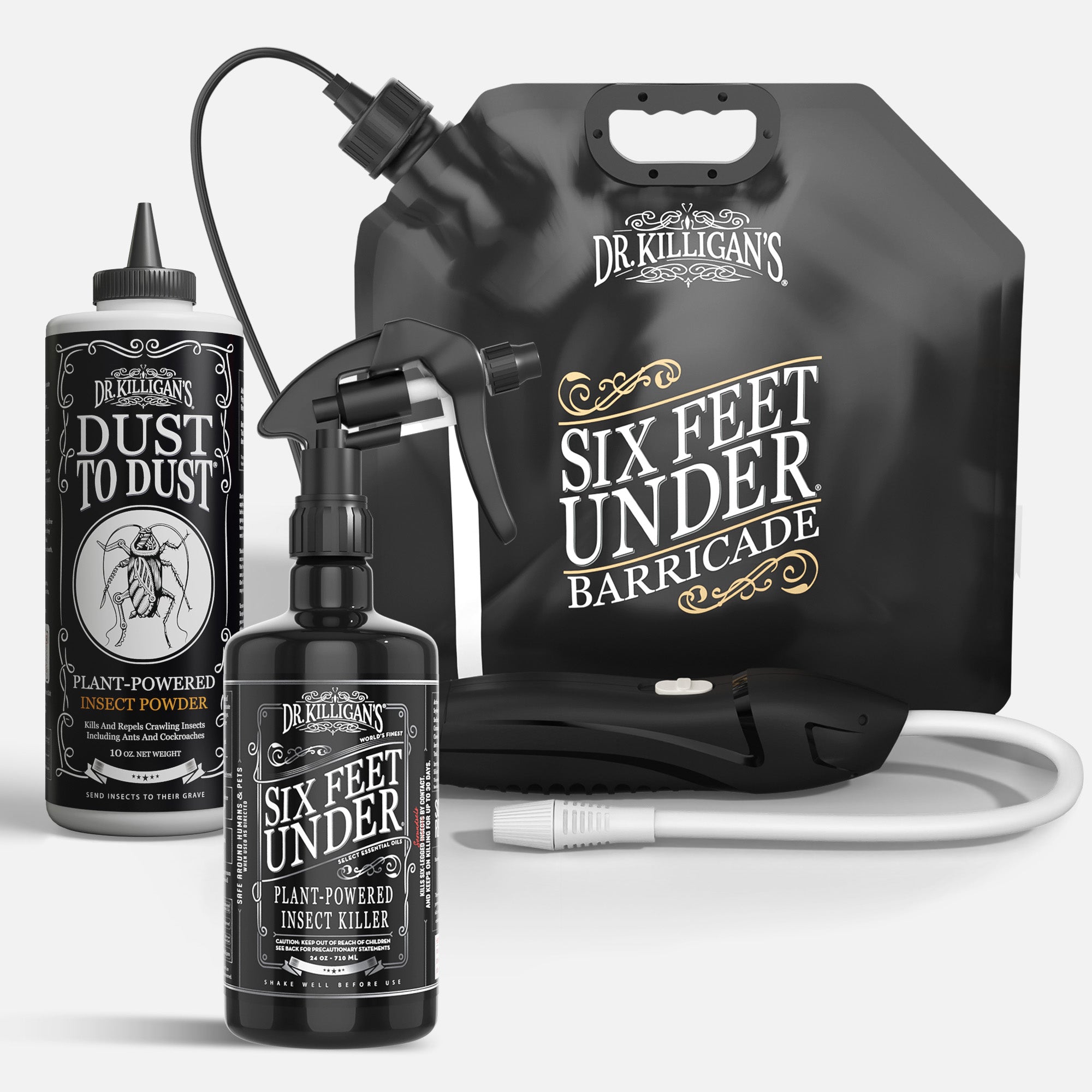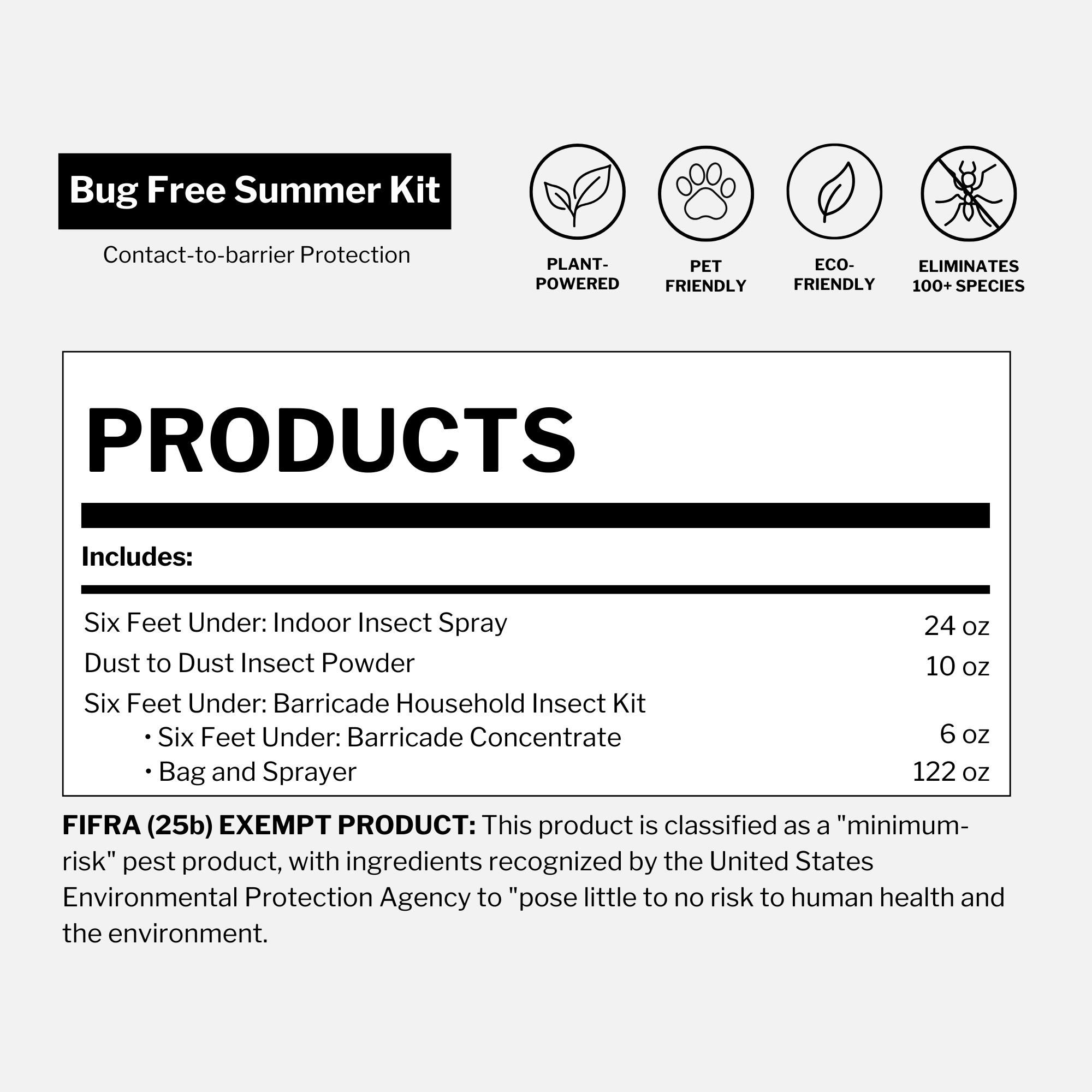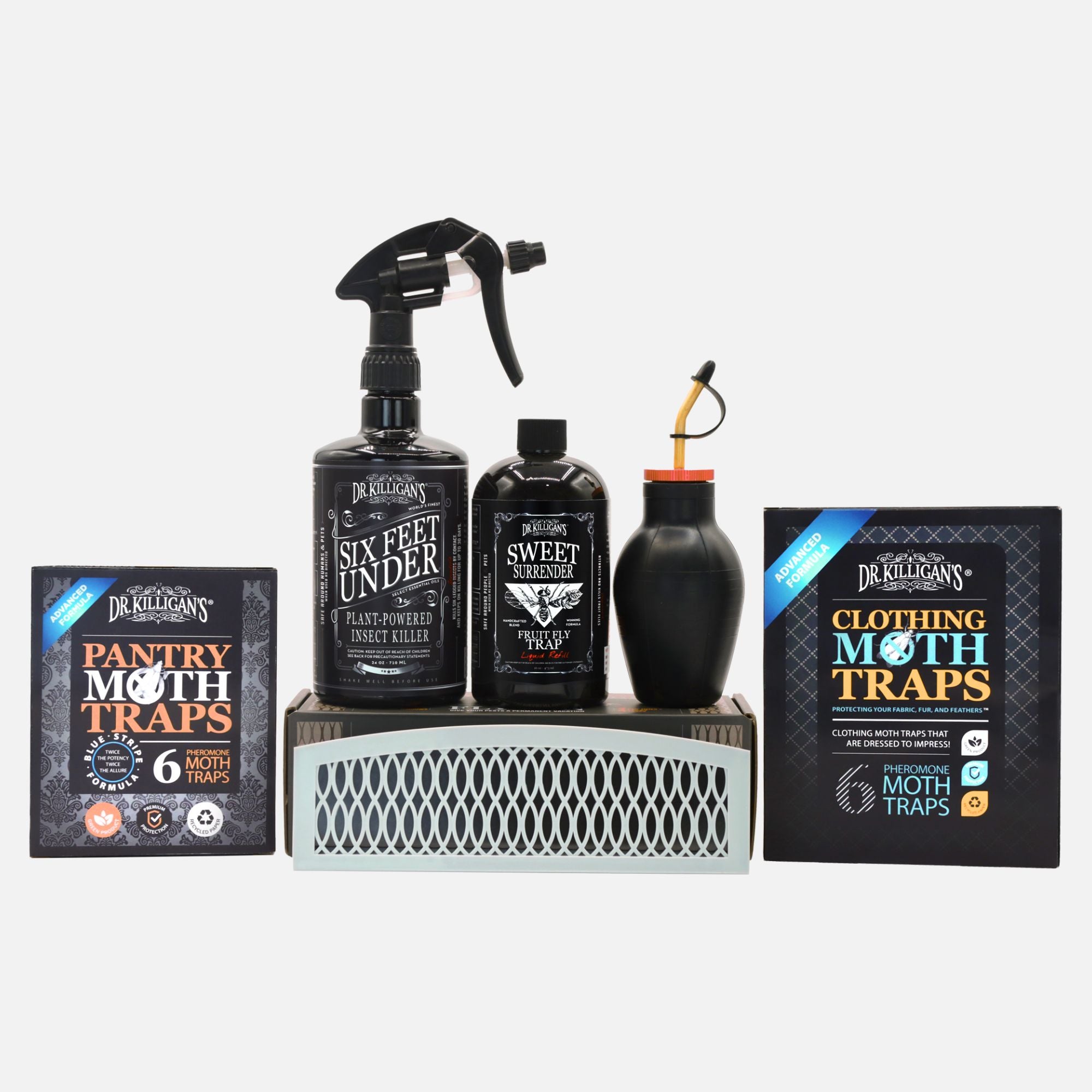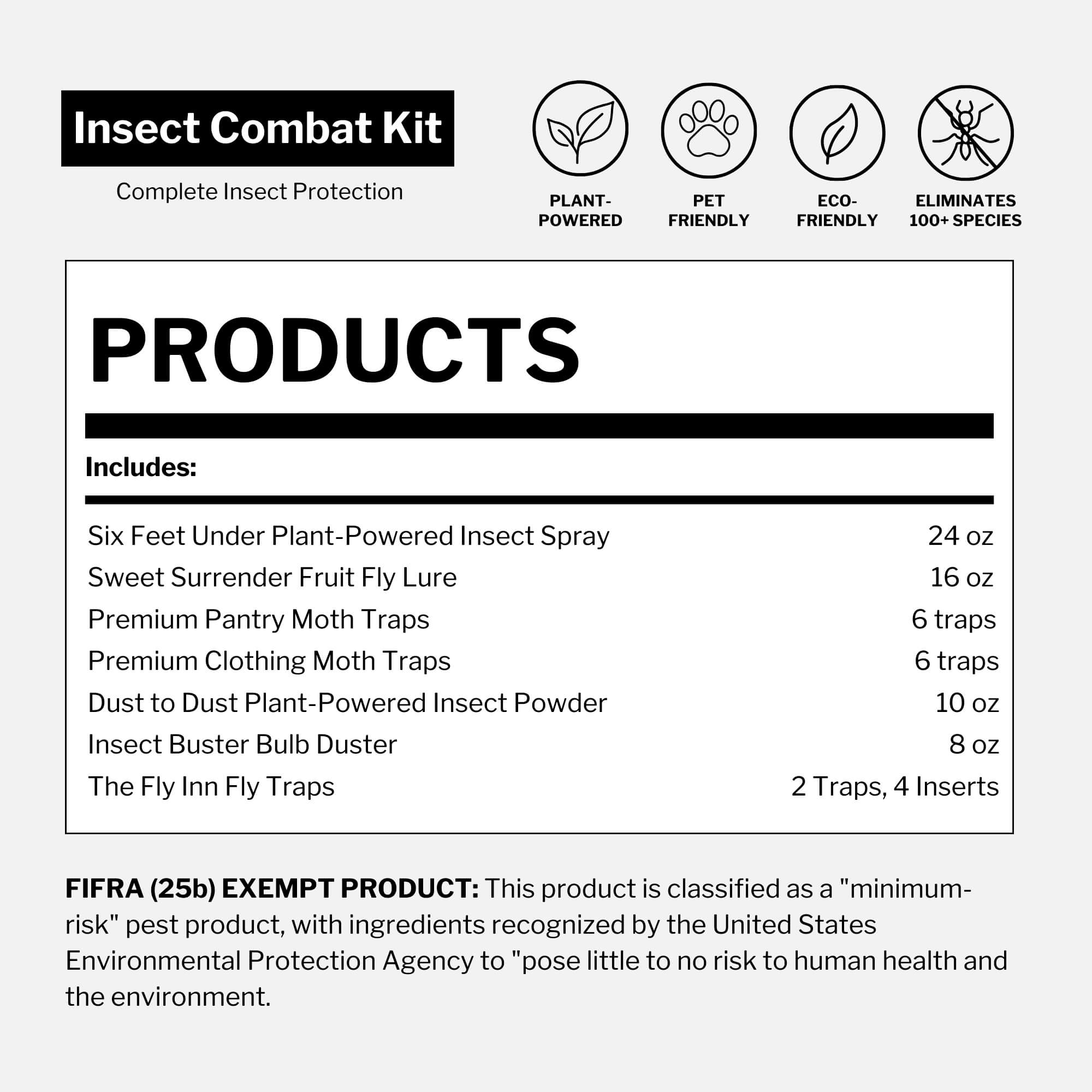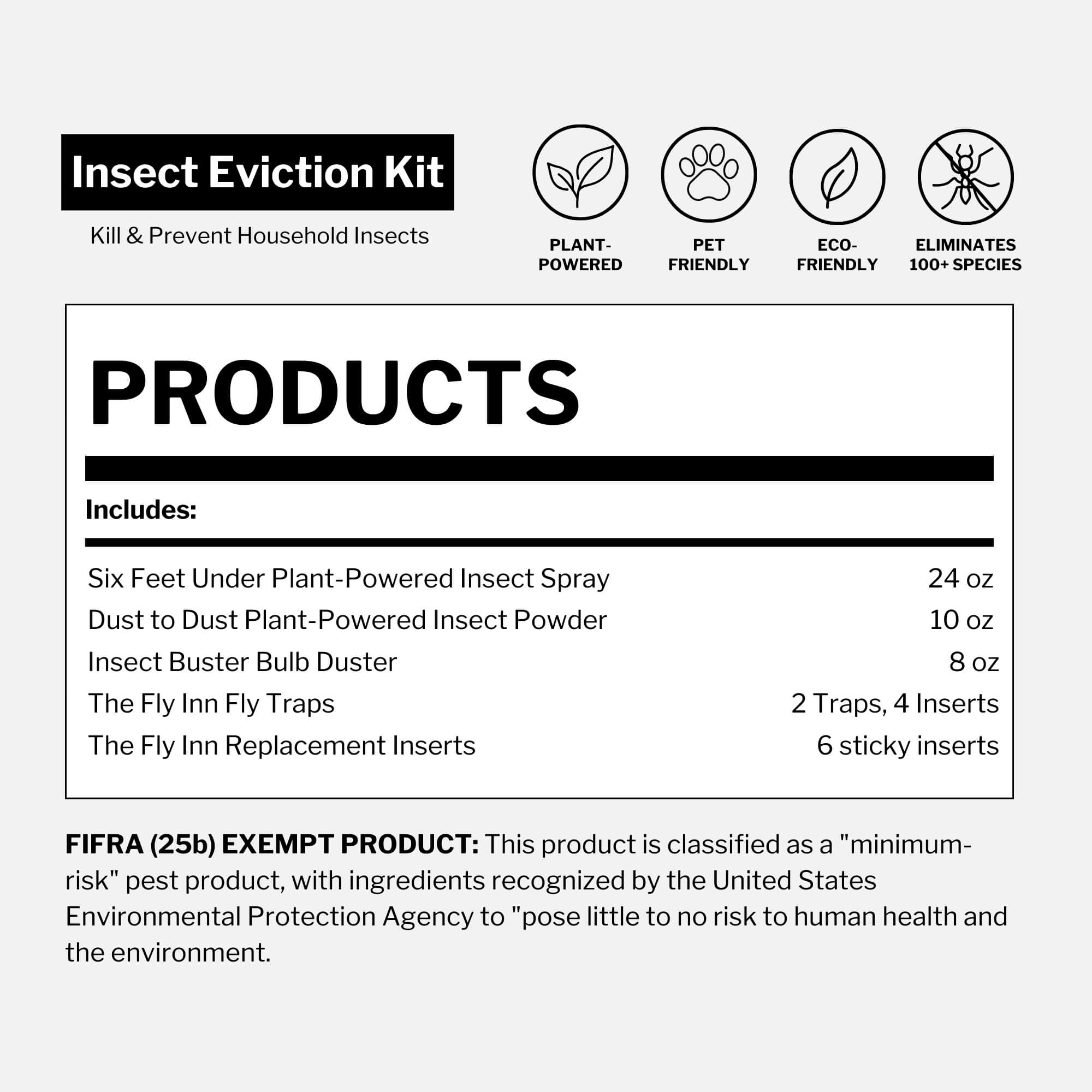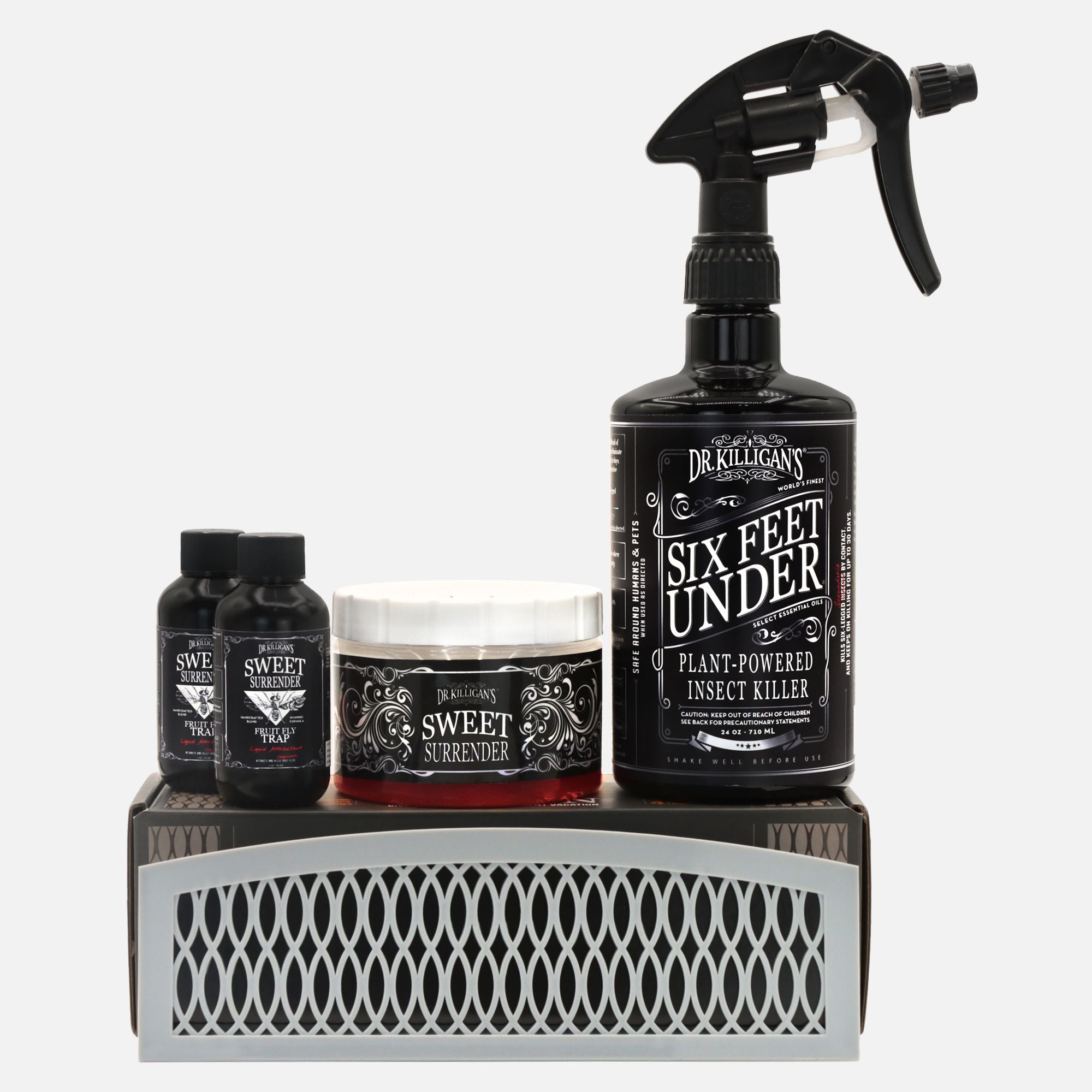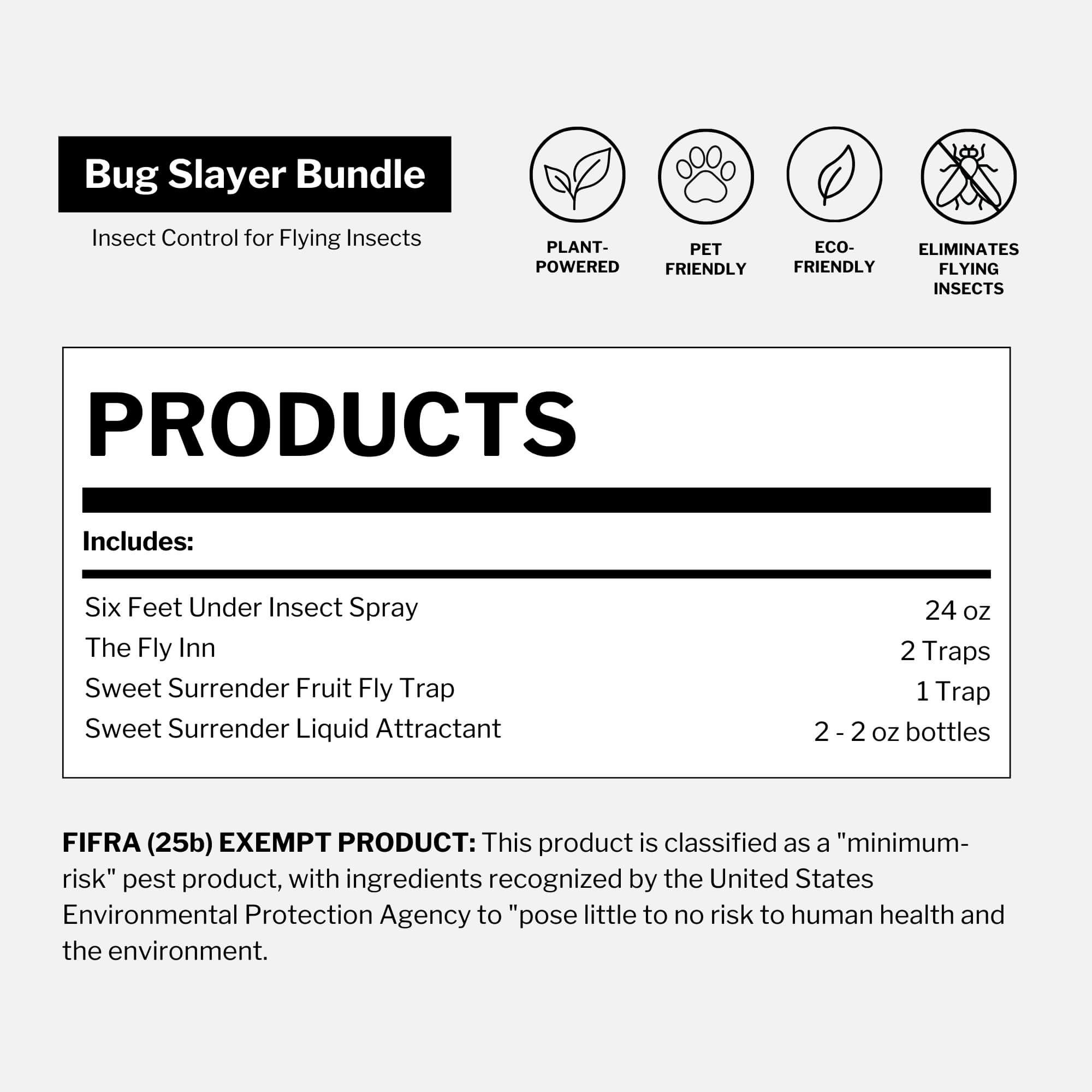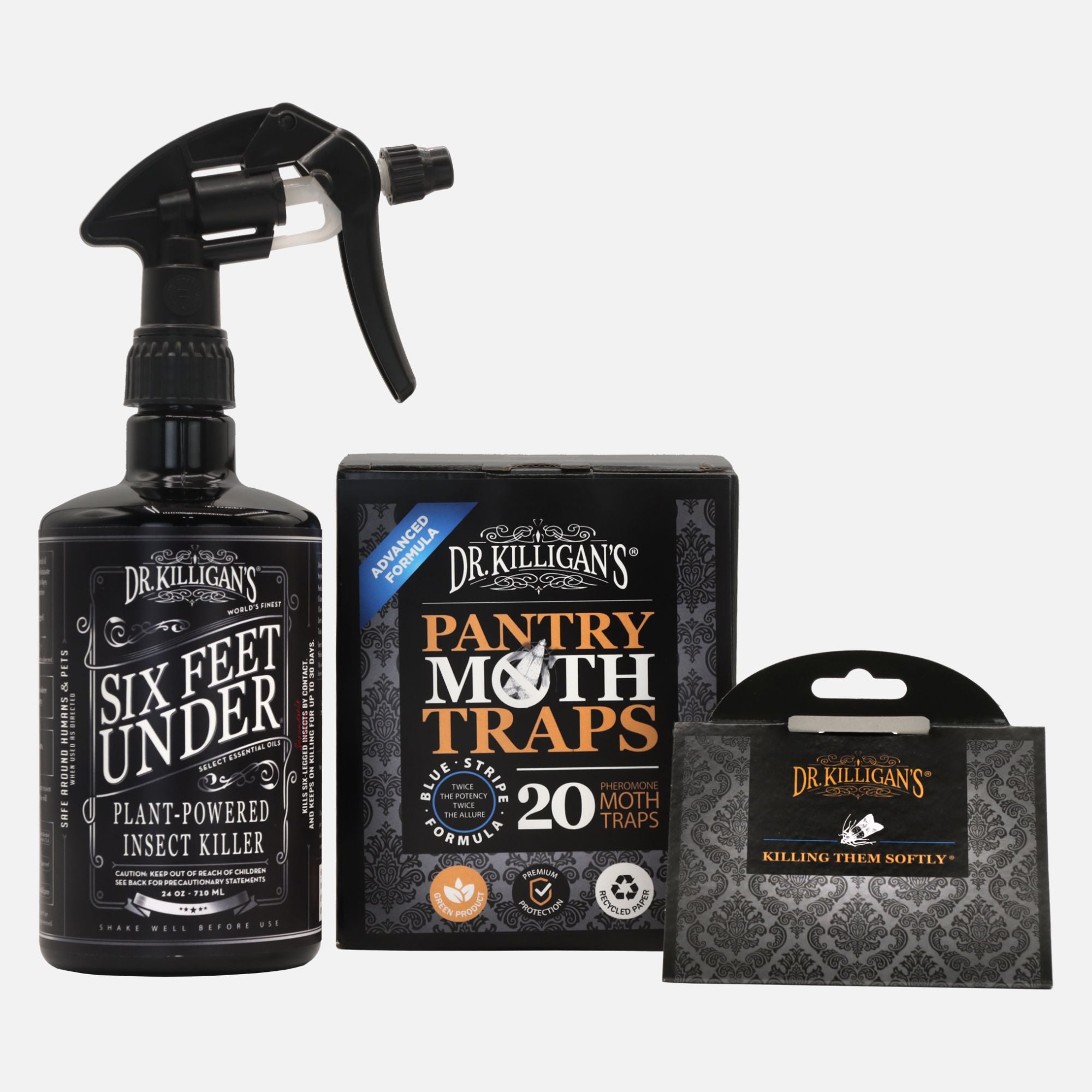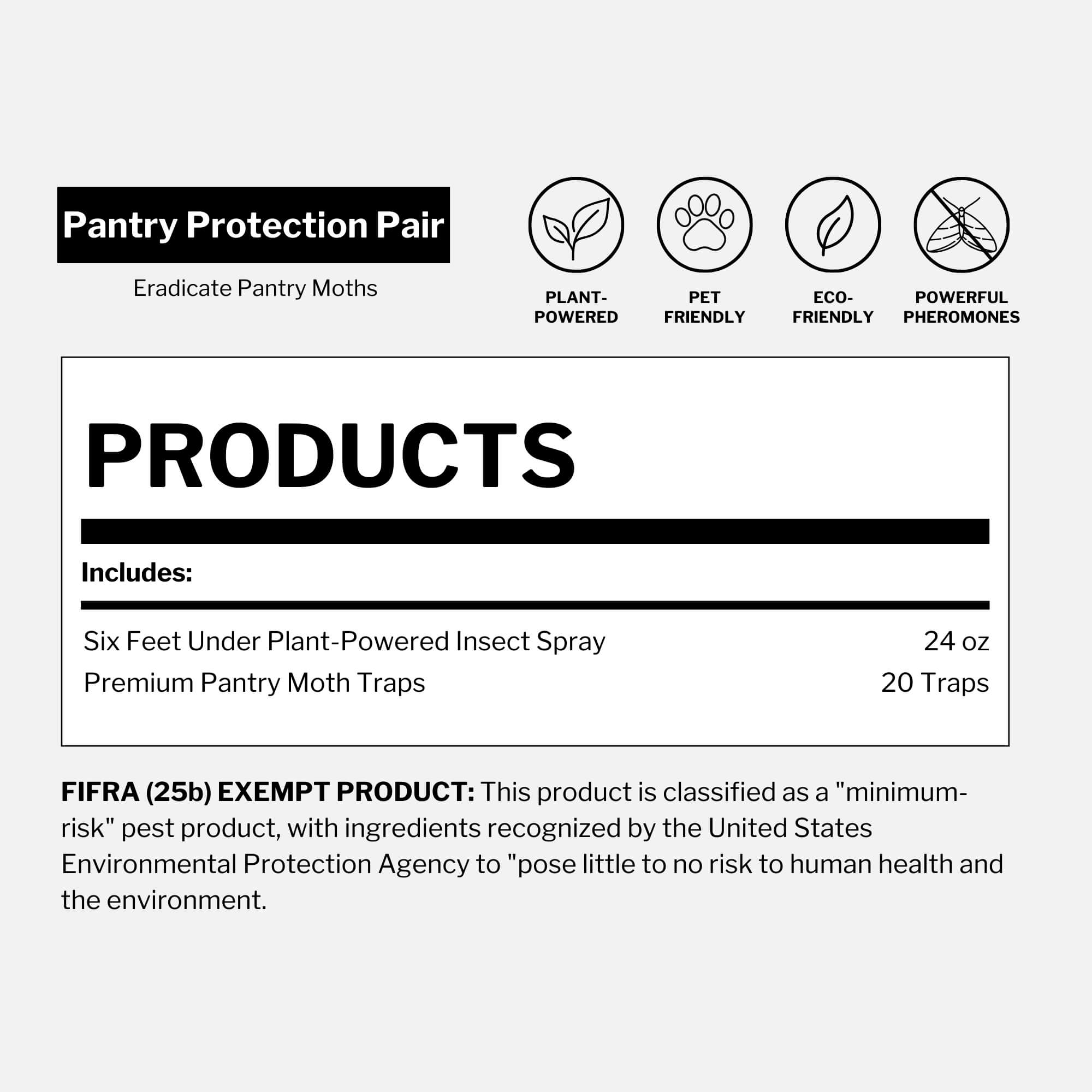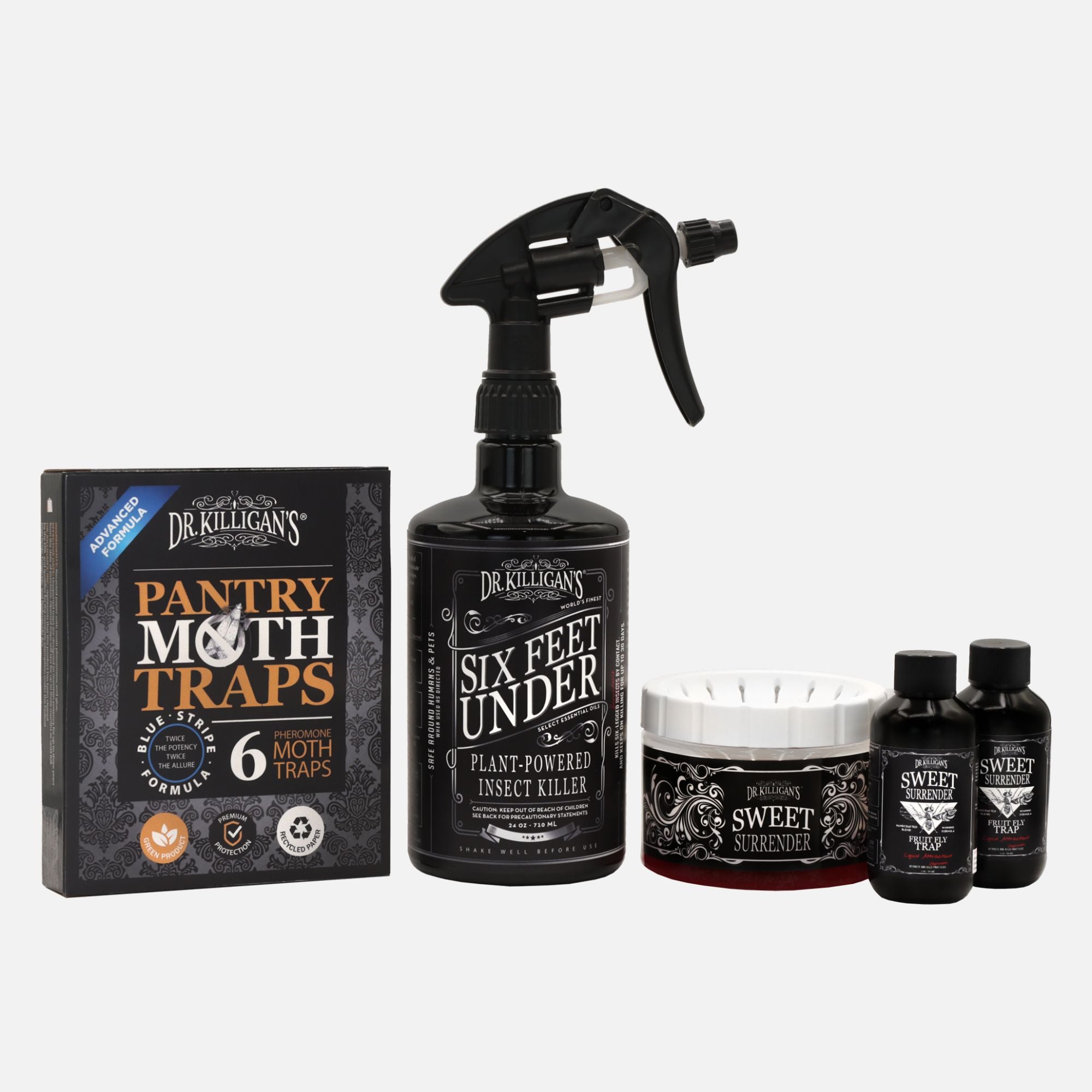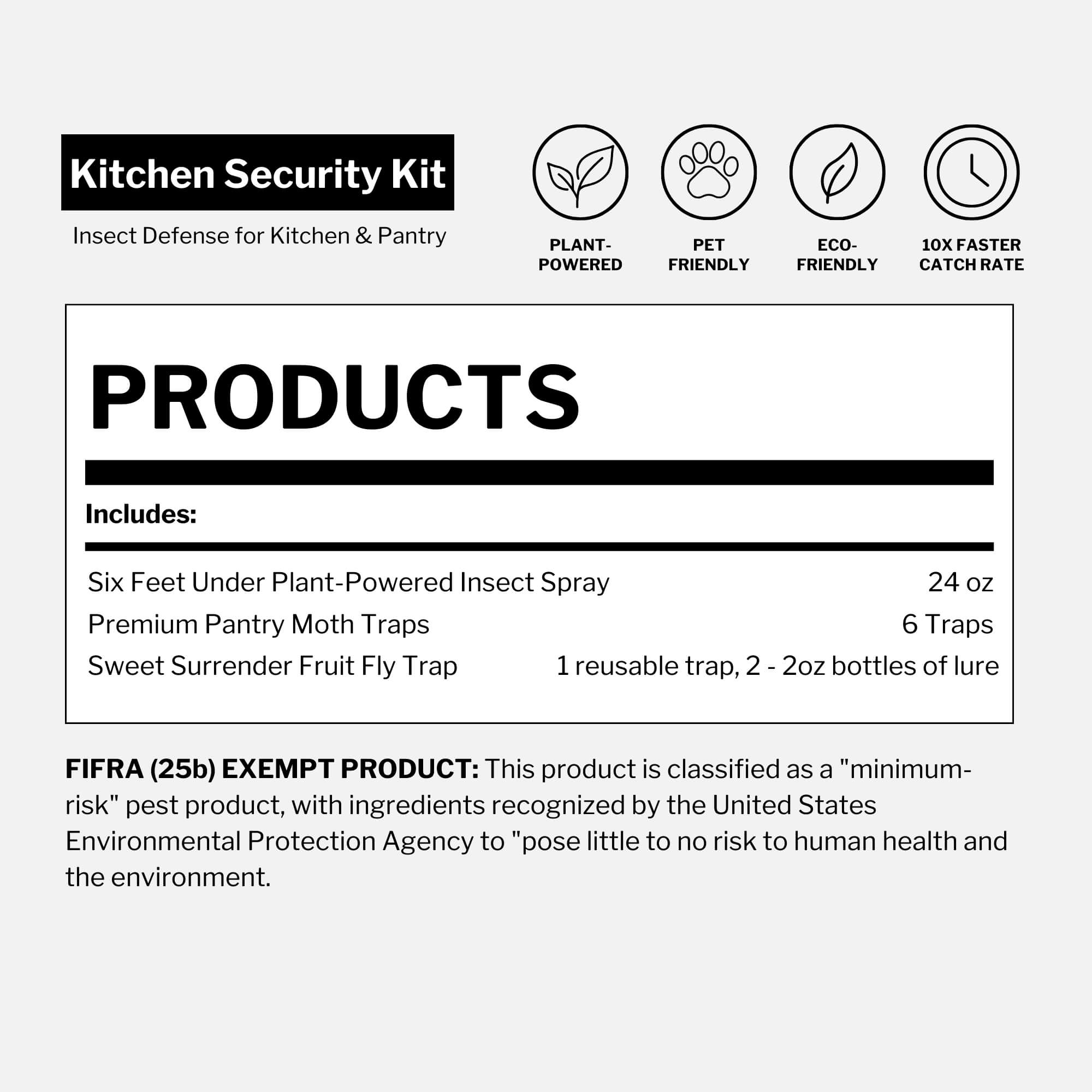Updated on May 13th, 2025
Clothes moths are small, winged insects commonly found in homes and other indoor spaces. They are attracted to natural fibers—like wool, silk, fur and feathers—which they feed on and use as places to deposit their eggs.
If left uncontrolled, clothes moths can seriously harm clothing, carpets and other household textiles. Their larvae are the real culprits, chewing through delicate fibers and leaving behind unsightly holes and frayed material.
There are two common species to watch for: the webbing clothes moths (Tineola bisselliella) and the case-bearing clothes moths (Tinea pellionella). While both are destructive, webbing clothes moths are more widespread and often referred to as the "common clothes moth."
In this article, we’ll break down the clothes moth life cycle—from how long clothes moth eggs can remain dormant, to how long each stage lasts, to the destructive feeding habits of moth larvae. By understanding this timeline, you’ll be better equipped to prevent or eliminate an infestation.
Clothes moth life cycle: An overview

Clothes moths—including the webbing clothes moth (Tineola bisselliella) and the case-bearing clothes moth (Tinea pellionella)—go through complete metamorphosis, transitioning through four stages: egg, larva, pupa and adult. Each phase plays a critical role in their development and their ability to damage household textiles.
Eggs are laid. A single female lays around 40 to 50 soft, white eggs, typically in dark, undisturbed fabrics. These clothes moth eggs develop quickly—maturing in 4 to 10 days and hatching within 10 to 21 days, depending on temperature and humidity.
Damaging larvae hatch. These moth larvae feast (and feast). Webbing clothes moths feed aggressively for 35+ days, while case-bearing moth larvae feed for 68 to 87 days, chewing through keratin-rich fabrics like wool and silk.
Resting pupae grow. Larvae find hidden areas to spin cocoons made of silk, fibers and frass (or poo). The pupal stage lasts 8 to 40 days, varying by season and environment.
Adult moths emerge. Though they don’t feed, adult clothes moths focus on mating and laying eggs. Females die shortly after egg-laying; males may survive several more weeks to continue mating.
Overall, the clothes moth lifespan ranges from 2 to 3 months, though under optimal conditions they may survive up to a year—especially if clothes moth larvae find continuous access to food.
Where do clothes moths lay eggs?
Clothes moths prefer quiet, low-traffic spaces where newly hatched larvae will have immediate access to food. They often target natural fiber garments—like cashmere sweaters, wool coats, leather jackets and silk scarves—embedding their soft, white eggs deep within the threads. These eggs are sticky, secured by a gelatinous substance that helps them stay attached despite routine handling.
Each pinhead-sized egg is laid singly or in clusters and is typically hidden in fabric folds, seams or the corners of rarely used drawers and closets. This placement protects them from disruption and increases the chances of successful hatching.
Clothes moth eggs can remain dormant in undisturbed fabric for several weeks, especially in humid or warm conditions.
In addition to clothing, these moths may also choose to lay eggs in a variety of other dark and undisturbed textiles around the home, including upholstered furniture, curtains, carpets and even decorative items that contain animal fibers.
Note: For a comprehensive list of all the materials that clothes moths target, read Do clothing moths actually eat clothes?
Destructive moth larvae: What to know
The larvae of both webbing and case-making clothes moths are responsible for nearly all the damage to natural fibers.
These newly hatched clothes moth larvae—white or cream colored with brown heads—resemble tiny wiggling grains of rice. They are voracious feeders with an insatiable appetite, starting out at less than one-fifth inch long and growing to be as large as one-half inch. These greedy little feasters happily digest the fabrics they came into being on.
Note: If non-keratin materials (like synthetics) are stained with food, sweat or blended with wool, larvae may eat those too. Even sheepskin rugs, taxidermy and furniture aren’t safe.
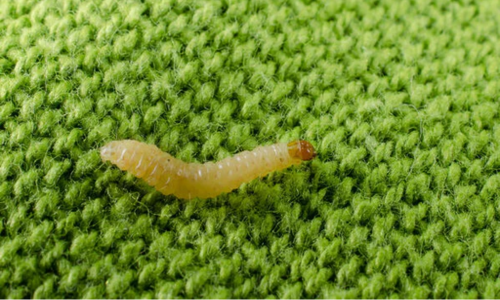
Webbing clothes moth larvae
These blind larvae may spin irregular silk patches or stationary feeding tubes made of fibers, feces and silk—but they do not carry them.
The tube: If present, it’s fixed to one location and blends in with the surrounding fabric, often going unnoticed until damage has occurred.
Case-bearing clothes moth larvae
These larvae have a simple eye on each side of their head and carry a portable, silken case—a protective home made from the fibers they consume. It grows with them and only their legs and head extend outside.
The case: Often dyed from the fabric they feed on, it's a mobile shell essential to survival. Separation from the case usually results in death.
How destructive are moth larvae?
Their impact depends on:
- Material vulnerability: Are you storing high-quality, natural fibers like cashmere or angora, which provide easy nourishment and suffer severe damage easily?
- Usage frequency: Are your garments rarely disturbed? Items that are frequently used and moved are less likely to host a significant infestation compared to those that sit undisturbed for months or years.
- Storage conditions: Is your closet dark, still and poorly ventilated? Such conditions are conducive to moth survival and reproduction
- Volume of fabric: The more keratin-rich items, the higher the risk of widespread damage.
Pocket fact: According to Learn About Nature, clothes moth larvae can consume up to 2,700 times their body weight during the feeding stage.
How long does the pupae stage last?
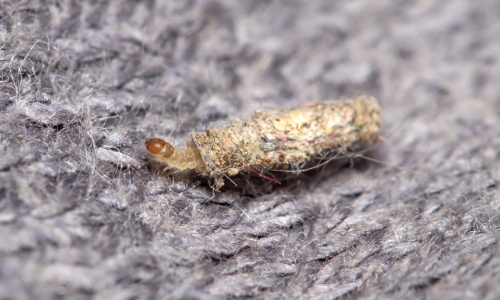
As noted earlier, the pupal stage in the clothes moth life cycle typically lasts between 8 and 40 days, depending on temperature, humidity and seasonal conditions.
During this time, case-bearing clothes moth larvae retreat into their portable silken cases, while webbing clothes moths spin fixed cocoons in fabric folds.
Inside these protective shelters, something remarkable happens. Specialized cells become active, breaking down the larva’s body into a mass of goo that miraculously remodels itself into an adult moth—a process known as histolysis. This transformation is accelerated by warm conditions and delayed in cooler or drier environments.
At this stage, the larva is dormant, does not feed and is vulnerable to disruption. As it nears emergence, its cocoon darkens in color—a subtle clue that metamorphosis is nearly complete.
Tip: Pupae are often hidden in dark, undisturbed corners of your home. Locating and removing them—with vacuuming, routine cleaning and Six Feet Under Plant-Powered Insect Spray—can interrupt the cycle and prevent a fresh wave of adults from hatching.
Adult clothes moths: Behavior & appearance
Adult clothes moths—whether webbing (Tineola bisselliella) or case-bearing (Tinea pellionella)—have just one goal: to reproduce.
Though adult clothes moths don’t feed, their role in the clothes moth life cycle is crucial. Within hours of emerging from their cocoons, they begin to seek mates. Males use their antennae to detect minuscule amounts of pheromone left by females and flutter toward them in zigzag patterns. When you spot one fluttering indoors, it’s usually a male mid-pursuit.
How do clothes moths move? Clothes moths get around in three ways: flying, running and jumping. But they’re weak fliers—fluttering aimlessly rather than flying in a direct, steady path like pantry moths. Females rarely fly at all, preferring to crawl, which makes them especially hard to spot.

Size:
- Webbing clothes moths measure 5–8 millimeters in body length—about the size of a grain of rice.
- Case-bearing moths are similar in length, but may appear slightly bulkier due to their wing structure.
Appearance:
- Webbing moths are yellowish-gold with a tuft of reddish hairs on their heads.
- Case-bearing moths are similar in color but are speckled with dark spots and lack the tuft.
Behavior: Both species are shy, elusive and rarely seen until the damage is done.
Where to look for adult moths:
- In dark corners of infrequently used drawers
- Along seams, cuffs or collars of wool garments
- Behind or beneath furniture or rugs
- Among seasonal clothes that haven't been disturbed
Note: Looking for help identifying their hiding places? Check out Where do clothing moths come from
How to get rid of clothes moths: Traps, sprays & prevention tips
With clothes moth issues on the rise—and now that you understand how fast they reproduce—it’s time to act.

Dr. Killigan’s Clothing Moth Traps are one of the most effective solutions available. Featuring a proprietary, double-potent pheromone formula, these traps combine a powerful attractant with an ultra-sticky glue board that male moths can’t resist. They’ll flutter in looking for a mate—and meet their end instead.
For best results, place one trap high on your closet rod and another low to the ground. This dual placement strategy targets moths at all activity levels.
Want to stop an infestation before it starts? Read 11 tips on how to prevent a clothing moth infestation, packed with practical, easy-to-follow advice.
This is just the beginning. For a full, step-by-step strategy, check out our comprehensive guide How to get rid of clothing moths
Now that you understand the clothes moth life cycle, take action before they cause more damage. Explore Dr. Killigan’s trusted tools—from double-potent pheromone traps to plant-powered sprays that eliminate larvae safely and naturally.



